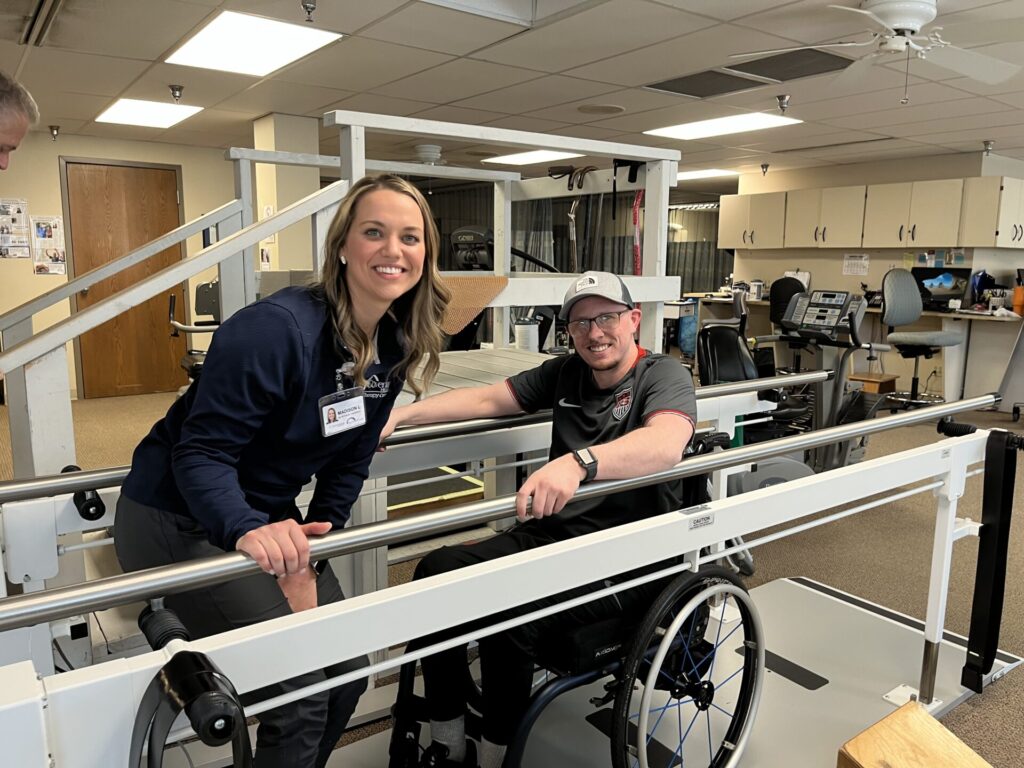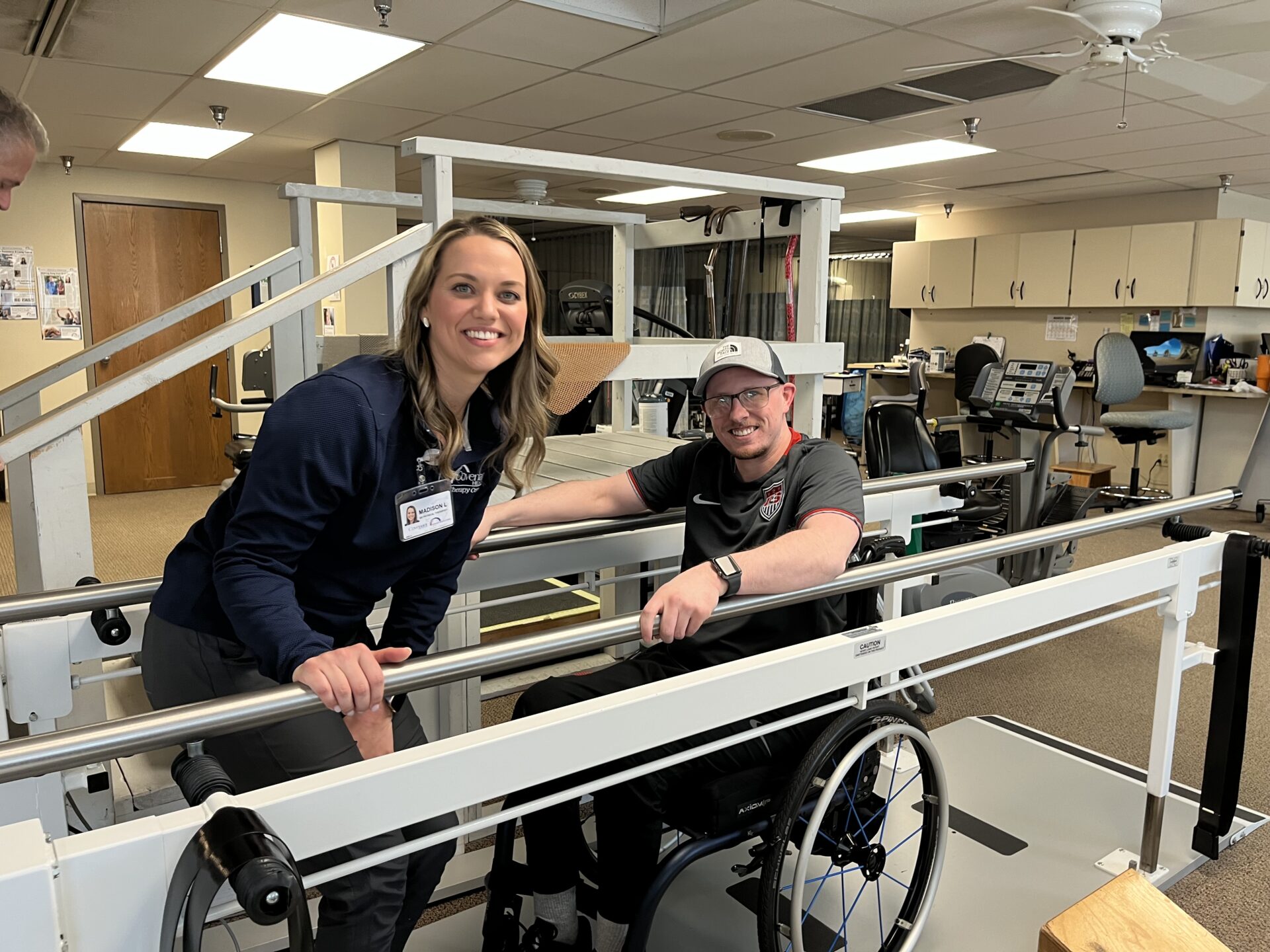- Find a DoctorDoctors by Specialty
- Cardiac Electrophysiology
- Cardiology
- Colon & Rectal Surgery
- Family Medicine
- Gastroenterology
- General & Vascular Surgery
- Gynecological Oncology
- Gynecology
- Infectious Disease
- Internal Medicine
- Interventional Cardiology
- Interventional Radiology
- Nephrology
- Neurology
- Neurosurgery
- Obstetrics & Gynecology
- Oncology
- Oncology & Hematology
- Orthopedic Surgery
- Otolaryngology
- Perinatology
- Psychiatry
- Pulmonary Medicine
- Radiation Oncology
- Rheumatology
- Sleep Medicine
- Thoracic Surgery
- Urology
- View All Doctors
- Our ServicesMedical Services
- Bariatric Services
- Behavioral & Mental Health
- Breast Care
- Cancer Care
- Critical Care
- Ear, Nose, & Throat
- Emergency Services
- Gastroenterology
- Glossary
- Heart Care
- Home Care
- Hospice & Palliative Care
- Imaging & Diagnostics
- Long-Term Care
- Nephrology
- Orthopedics
- Primary Care
- Rehabilitation Therapies
- Robotic-Assisted Surgery
- Sleep Services
- Spine Care
- Stroke Care
- Surgery Services
- Telehealth Services
- Urology
- Urgent Care
- Virtual Urgent Care
- Women’s Services
- Wound Care
- Our Locations
- Patients & Visitors
- About Us
Sevier EMS, LeConte Work to Save Time and Brain

It’s not the easiest job – navigating through three lanes of bumper-to-bumper traffic with lights flashing and sirens blaring.
But try getting to LeConte Medical Center without lights and siren, and see how far it gets you – and how fast. That’s because when it comes to stroke, Sevier County Ambulance Service is the BEST way to go.
Not only does calling 911 save time but also millions of brain cells, making a huge difference in how well – or if – you’ll recover from a stroke.
Speed and skill where it counts

Sevier County Emergency Medical Services Director Rick Valentine says he considers his EMS team and LeConte Medical Center vital community healthcare partners. “A good community EMS system needs to have a great working relationship with its community hospital. Likewise, a great community hospital needs to have a great working relationship with its EMS system. We’re going to have that relationship as long as I have anything to do with it. We’re going to take care of our community.”
When LCMC was awarded the “Get with the Guidelines” Gold Plus Quality Award by the American Heart Association/American Stroke Association in recognition of hospitals reaching and maintaining an advanced level of quality measures and compliance throughout a year, they wanted to share it with everyone involved.
“It’s such a team effort throughout the facility, and we wanted to recognize everyone who plays a part in that,” said Callie West, RN, LCMC’s stroke team coordinator. “So we included EMS in the award recognition because they play such a big part in the acute stroke care process.”
West said the speed and skill provided by Sevier County’s ambulances have enabled LCMC to better care for heart and stroke patients, and meet the quality measures required.
“It’s not an easy job, and it takes a special kind of person to be on scene and in that moment with someone at their worst time,” said West. “With stroke patients they have certain measures that they have to meet such as getting to the scene in a certain amount of time, and they do a very good job of that even with the large area they have to cover.”
West also said having the county EMS headquarters adjacent to LeConte Medical Center is also an advantage. “They are in our backyard and we can have that close relationship,” she said. “They see what we’re doing, we see what they’re doing, and we can collaborate on processes in a way that I don’t think we could do with another service. We have a good relationship because they are serving the same community we are. Speaking for myself, this is my home – and it’s the same for them.”
What is a stroke?
In reality, a stroke is a brain attack caused by either a sudden arterial blockage (ischemic) or bleeding (hemorrhagic). Depending on location and severity, strokes can cause temporary to permanent disability in the limbs, difficulty speaking, seeing, walking or even death. Stroke is the fifth-leading cause of death in the U.S.
At first onset of a stroke, brain cells begin rapidly dying. For every minute a large vessel ischemic stroke is untreated, the average person loses 1.9 million neurons, 13.8 billion synapses and seven miles of axonal fibers.
Fortunately, Valentine says campaigns to raise stroke awareness and the critical role 911 plays in pre-hospital treatment are working. Not only does calling 911 when stroke is first suspected alert Sevier’s ambulance service, but also first responder paramedics from the nearest fire department who may arrive even before the ambulance.
With nine ambulances always on duty at six locations around Sevier County, Valentine says the average ambulance arrival time of 10 minutes is “pretty good,” especially considering the challenges of rural remoteness and high-volume tourism in Sevierville, Gatlinburg and Pigeon Forge. Valentine estimates his crews receive 16,000 calls a year, including three to four stroke calls per day. Those patients are taken to LeConte, a part of Covenant Health’s stroke hospital network.
As a certified Advanced Primary Stroke Center, LeConte sees more than 200 stroke patients a year. For those with ischemic strokes, many are able to receive the all-important clot-busting drug called tPA, or tissue-Plasminogen Activator, within the tight time window required. This clot-busting drug is given intravenously to break up the clot that is causing a blockage and helps restore the blood flow to the brain. Patients with hemorrhagic or more complex strokes in need of clot retrieval are transported by EMS or air-lifted to a Comprehensive Stroke Center such as Fort Sanders Regional Medical Center.
“A lot of people ask how we do it, and quite simply, I always say ‘the best way we can,’” said Valentine. “We know ways to get around in high-traffic times, but tourists are starting to learn those routes as well. It’s a challenge, but that’s our primary objective – to take care of our community as best we can.”
But it’s what happens after the ambulance arrives that is making a noticeable impact on LeConte’s stroke patients. The crew, which receives advanced training twice yearly in stroke recognition, triage processes and treatment, sets to work checking blood pressure, glucose and vital signs, drawing blood and gathering crucial information like medical history and medication lists. Virtually every action is time-stamped.
Within minutes, the patient is en route to the hospital and LeConte’s stroke team is alerted and waiting when the ambulance arrives at the bay door. The patient and information collected by the ambulance crew are handed off to the stroke team, and it’s off to imaging for a CT scan and possibly tPA.
“When that part of the process is already done, you save 15 to 20 minutes or more and that’s a better outcome – you’re saving more brain,” said West. “When the patient comes by EMS, the ball is already rolling. It’s really streamlined, and that makes a huge difference in the outcome. We talk about survival rates, but it’s also about the quality of life.”
























